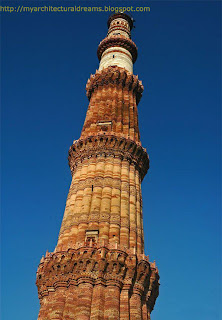My Favorite International Architects:
Frank Lloyd Wright :
Frank Lloyd Wright (June 8, 1867—April 9, 1959) was one of the most prominent and influential architects of his era. He developed a series of highly individual styles over his extraordinarily long architectural career (spanning the years 1887-1959) and influenced the entire course of American architecture and building. To this day, he remains America's most famous architect.
"The greatest artist this century has ever produced seems, at last, to be coming into his own...America's other great artists - our best painters, sculptors, composers - don't really rank with the tops of all time. They're just not Rembrandt, Michelangelo or Beethoven. Wright alone has that kind of standing...he's among the greatest architects who ever practiced."
“No architect has so blatantly ignored the rules of architecture, so well.” -Robert Campbell, Pulitzer Prize-winning architectural journalist.
Wright was also well known in his lifetime for his colorful personal life that frequently made headlines, most notably for the failure of his first two marriages and the 1914 fire and murders at his Taliesin studio.
Mies van der Rohe:
The modern city, with its towers of glass and steel, can be at least in part attributed to the influence of architect Mies van der Rohe. Equally significant, if smaller in scale, is Mies' daring design of furniture, pieces that exhibit an unerring sense of proportion, as well as minimalist forms and exquisitely refined details. In fact, his chairs have been called architecture in miniature exercises in structure and materials that achieve an extraordinary visual harmony as autonomous pieces or in relation to the interiors for which they were originally designed.
Mies van der Rohe began his career in architecture in Berlin, working as an architect first in the studio of Bruno Paul and then, like Le Corbusier and Walter Gropius, Peter Behrens. In the mid-1920's, he began to design furniture, pieces that he conceived and created for particular interiors. In 1927, he met Lilly Reich, a Bauhaus alumnus who collaborated with Mies on his first versions of a cantilevered chair with a tubular steel frame. The cantilevered chair had a curved frame that exploited the aesthetic, as well as the structural possibilities of this material. Their experiments culminated in the virtuoso Brno chair designed between 1929 and 1930 with a chromed flat steel frame.
Two years later, Mies and Lilly Reich designed what is perhaps his most famous creation. Created for the German Pavilion at the Barcelona International Exhibition, the Pavilion chair was intended as a modern throne; a thick cushion upholstered in luxurious leather and set upon a curved metal frame in the shape of an X inspired by classical furniture. Perfectly proportioned and finished, the simple chair exuded an air of elegance and authority.
In 1938, Mies emigrated from Europe and moved to Chicago. The rest of his career was devoted to promoting the Modernist style of architecture in the U.S., resulting in rigorously modern buildings such as the Farnsworth House and the Seagram Building, designed with Philip Johnson. Perhaps the best summation of his work is Mies' own: thoughts in action.
Le Corbusier:
Few would protest that Le Corbusier, Charles Edouard Jenneret, is one of the most influential architects of the 20th century. He articulated provocative ideas, created revolutionary designs and demonstrated a strong, if utopian, sense of purpose — to meet the needs of a democratic society dominated by the machine.
Le Corbusier, like his father, began by learning the art of metal engraving. However, he was encouraged by a teacher to take up architecture and built his first house at the age of 18 for a member of his school's teaching staff. In 1908, he went to Paris and began to practice with Auguste Pierret, an architect known for his pioneering use of concrete and reinforced steel. Moving to Berlin, Le Corbusier worked with Peter Behrens, who taught him about industrial processes and machine design. In 1917, he returned to Paris where he met post-cubist Amedee Ozenfant and developed Purism, a new concept of painting. In 1920, still in Paris, he adopted the pseudonym, Le Corbusier.
Paradoxically, Le Corbusier combined a passion for classical Greek architecture and an attraction to the modern machine. He published his ideas in a book entitled, Vers une Architecture, in which he refers to the house as a "machine for living," an industrial product that should include functional furniture or "equipment de l'habitation." In this spirit, Le Corbusier co-designed a system of furniture with his cousin Pierre Jeanneret and Charlotte Perriand. The tubular steel furniture — like the famous chaise and Grand Confort chair — projected a new rationalist aesthetic that came to epitomize the International Style.
During the 1920's and 30's, Le Corbu concentrated on architecture and during the 1950's he moved towards more expressive forms that revealed the sculptural potential of concrete. Over the decades, his work has included mass housing blocks, public buildings and individual villas, all conceived with what he called the "engineer's aesthetic."










